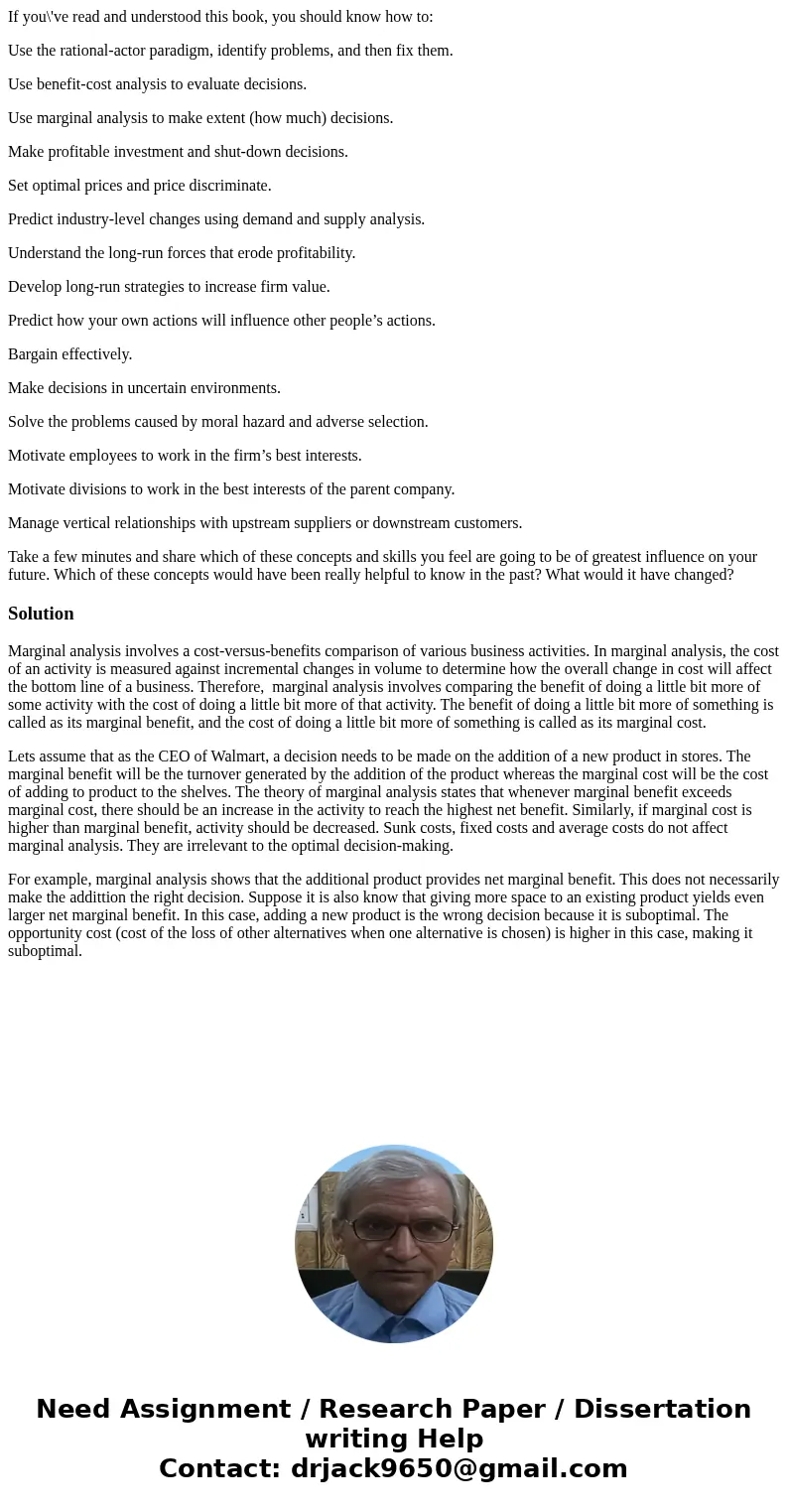If youve read and understood this book you should know how t
If you\'ve read and understood this book, you should know how to:
Use the rational-actor paradigm, identify problems, and then fix them.
Use benefit-cost analysis to evaluate decisions.
Use marginal analysis to make extent (how much) decisions.
Make profitable investment and shut-down decisions.
Set optimal prices and price discriminate.
Predict industry-level changes using demand and supply analysis.
Understand the long-run forces that erode profitability.
Develop long-run strategies to increase firm value.
Predict how your own actions will influence other people’s actions.
Bargain effectively.
Make decisions in uncertain environments.
Solve the problems caused by moral hazard and adverse selection.
Motivate employees to work in the firm’s best interests.
Motivate divisions to work in the best interests of the parent company.
Manage vertical relationships with upstream suppliers or downstream customers.
Take a few minutes and share which of these concepts and skills you feel are going to be of greatest influence on your future. Which of these concepts would have been really helpful to know in the past? What would it have changed?
Solution
Marginal analysis involves a cost-versus-benefits comparison of various business activities. In marginal analysis, the cost of an activity is measured against incremental changes in volume to determine how the overall change in cost will affect the bottom line of a business. Therefore, marginal analysis involves comparing the benefit of doing a little bit more of some activity with the cost of doing a little bit more of that activity. The benefit of doing a little bit more of something is called as its marginal benefit, and the cost of doing a little bit more of something is called as its marginal cost.
Lets assume that as the CEO of Walmart, a decision needs to be made on the addition of a new product in stores. The marginal benefit will be the turnover generated by the addition of the product whereas the marginal cost will be the cost of adding to product to the shelves. The theory of marginal analysis states that whenever marginal benefit exceeds marginal cost, there should be an increase in the activity to reach the highest net benefit. Similarly, if marginal cost is higher than marginal benefit, activity should be decreased. Sunk costs, fixed costs and average costs do not affect marginal analysis. They are irrelevant to the optimal decision-making.
For example, marginal analysis shows that the additional product provides net marginal benefit. This does not necessarily make the addittion the right decision. Suppose it is also know that giving more space to an existing product yields even larger net marginal benefit. In this case, adding a new product is the wrong decision because it is suboptimal. The opportunity cost (cost of the loss of other alternatives when one alternative is chosen) is higher in this case, making it suboptimal.

 Homework Sourse
Homework Sourse